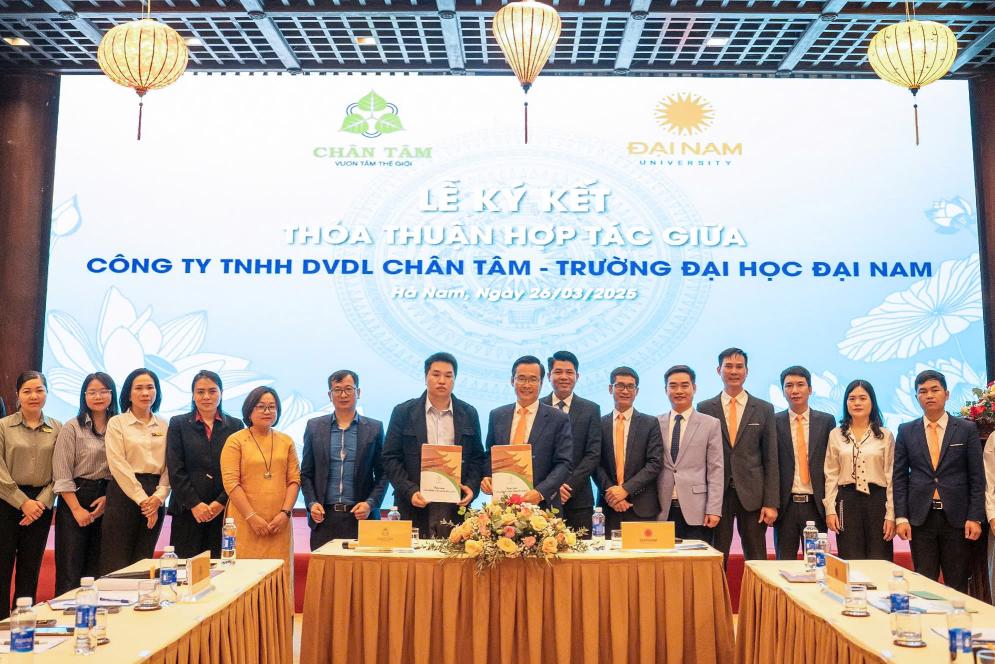Update changes in Accounting for Entrusted Imports according to Circular 200
Posted date 31/07/2019
28.058 view

Import entrustment is a necessary service when the owner wants to import goods to Vietnam, but does not do it himself but entrusts the import to a service company. In other words, this is a form of importing goods through an intermediary.
1. What is entrusted import? Import entrustment is a necessary service when the owner wants to import goods to Vietnam, but does not do it himself but entrusts the import to a service company. In other words, this is a form of importing goods through an intermediary.
2. Binding conditions:
- Enterprises (DN) receiving import authorization must be responsible for the legal status to import goods, responsible for paying import tax, special consumption tax (if any) and VAT on imported goods. Enterprises receive commissions for the authorization and must pay VAT on this commission.
- For import entrusting enterprises, they must be responsible for the costs of importing goods as agreed upon in the import entrustment contract, and are responsible for refunding the entrusted party for taxes that the entrusted party has paid on their behalf (if any).
3. Accounting for entrusted imports according to Circular 200 2. Binding conditions:
- Enterprises (DN) receiving import authorization must be responsible for the legal status to import goods, responsible for paying import tax, special consumption tax (if any) and VAT on imported goods. Enterprises receive commissions for the authorization and must pay VAT on this commission.
- For import entrusting enterprises, they must be responsible for the costs of importing goods as agreed upon in the import entrustment contract, and are responsible for refunding the entrusted party for taxes that the entrusted party has paid on their behalf (if any).
| STT | Business | Trustee | The assignor |
| 1 | The entrusting party transfers foreign currency to the entrusted party to open L/C. | Debit account 111, 112: actual exchange rate There is account 3388/entrusted unit | Debit account 331/trustee unit Debit account 635 Have account 515 Have account 111, 112 |
| 2 | L/C opening deposit | Debit account 244 Debit account 635 Have account 515 Have account 111,112 | |
| 3 | Receive imported goods at the border gate | When importing materials, equipment, and goods for the consignor, the accountant monitors the imported consignment goods on his/her management system and explains on the Financial Report the quantity, type, specifications, quality of the imported consignment goods, import period, payment subject..., and does not record the value of the imported consignment goods on the Balance Sheet. | |
| 4 | Payment for goods to foreign sellers | - Transfer deposit to open L/C and pay to seller Debit account 1388 Have account 244 - Payment to overseas seller for the amount due Debit account 1388 if the entrusting party does not advance money> Debit account 3388 If the trustor advances money > Have account 111,112 | |
5 | Pay taxes to Customs | Debit account 1388 Have account 111, 112 | |
| If the trustee submits | |||
| 6 | The consignee delivers the goods to the consignor. | Debit account 1388/entrusted unit Debit account 635 * Have account 515 * There are accounts 151, 156… (price includes all taxes) | Debit account 151, 156… (actual price) Debit account 133 (if deductible) Credit account 331/trustee unit |
| 7 | Reflects import commission fees | Debit account 131, 111, 112 There is account 511 (5113) Have account 3331 | Debit account 151, 156… Debit account 133 Credit account 331/trustee unit |
| 8 | The consignee pays the purchasing fees (bank fees, warehouse rental fees, goods inspection fees, transportation fees, etc.) on behalf of the consignor. | Debit account 1388 / entrusted unit Have account 111, 112 | Debit account 151, 156… Debit account 133 (if any) Credit account 331/trustee unit |
| 9 | The trustor pays the outstanding amount to the trustee. | Debit account 111, 112 Have account 1388 / entrusted unit | Debit account 331/trustee unit Have account 111, 112 |
Comment:
First: Record receivables and payables
According to Decision 15, the consignor is considered as the customer of the consignee, therefore, the amounts related to payment for goods, advances received from the consignor, and purchasing costs (bank fees, appraisal fees, transportation, etc.) are recorded by the consignee in account 131/details of the consignor.
On the contrary, the consignee is considered the seller of the consignment service, so it is reflected in account 331 of the consignor. In this case, the consignee is responsible for carrying out the entire import process from the time of signing the purchase contract with the foreign country, depositing to open L/C, paying for the goods to the seller, completing procedures to declare taxes payable to Customs, receiving the goods and transferring the goods to the consignor. During the period of time when the goods have been received but not yet delivered to the owner, the consignee considers the goods as its own (because they have been consigned) and accounts for them similarly to direct imports, only adding entries reflecting the payment status between the consignor parties and recording the commission (service fee) for the consignment.
According to Circular 200, advances are recorded in account 3388, and payments on behalf are recorded in account 1388.
Second: Margin account
When transferring deposit to open L/C according to Decision 15, record account 144, according to Circular 200, record account 244.
3rd: When importing goods
According to Decision 15, when importing goods, the accounting is on account 156 and recorded on the balance sheet of the unit entrusted to import the goods.
According to Circular 200, it is not recorded on the balance sheet but monitored on the management system and on the financial statement notes on the quantity, type and specifications of products.
Wednesday: Calculate import tax and special consumption tax
According to Decision 15: if the consignee pays taxes on behalf of the other party, the value of goods and tax payable will be recorded as increased. Specifically, Debit account 156/ Credit account 3333, 33312, 3332
According to Circular 200: if the entrusted party pays on behalf of the other party, the tax amount paid to the State budget will only be reflected as the payment on behalf of the entrusting party.
Thursday: Off-balance sheet accounts
According to Decision 15: In addition to converting foreign currency items and foreign currency-based debts into VND, accountants must still open a book to track the original currency shown in account 007 (detailed by original currency type and location), a detailed book of payments to buyers and sellers (with an additional original currency column). Whenever there is a change in foreign currency, along with double-entry entries, accountants must record an order in account 007 and related detailed books of accounts 131 and 331.
TT200: Do not use off-balance sheet accounts
Friday: Exchange rate
Because of trading with foreign countries, payment for goods must be made in foreign currency. Accountants must convert the value of imported goods, foreign currency received, exported and receivables and payables in foreign currency into Vietnamese Dong. This conversion depends on the foreign currency accounting method of the enterprise.
Decision 15: If a business uses the actual exchange rate method to convert foreign currencies, remember the following conversion principles:
- When receivables and payables arise in foreign currency, they are converted at the actual exchange rate (average interbank exchange rate on the date of transaction).
- When paying receivables and payables, convert according to the recorded exchange rate, that is, the exchange rate used for conversion when the debt arose.
- When importing foreign currency, convert it according to the actual exchange rate (buying rate in Vietnamese Dong or average interbank exchange rate on the day the transaction occurs).
- When exporting foreign currency, it is converted according to the foreign currency's book exchange rate, which is calculated according to one of four methods similar to raw materials: first in, first out, last in, first out, weighted average, and specific. From this, it can be seen that the book exchange rate of foreign currency will be different if calculated according to different methods.
According to Circular 200: When revenue, expenses, and taxable prices arise in foreign currency, foreign currency must be converted to VND at the actual transaction exchange rate. Specifically:
- The actual transaction exchange rate for revenue accounting is the buying rate of the commercial bank where the taxpayer opens an account.
- The actual transaction exchange rate for accounting for expenses is the selling exchange rate of the commercial bank where the taxpayer opens an account at the time the foreign currency payment transaction occurs.
First: Record receivables and payables
According to Decision 15, the consignor is considered as the customer of the consignee, therefore, the amounts related to payment for goods, advances received from the consignor, and purchasing costs (bank fees, appraisal fees, transportation, etc.) are recorded by the consignee in account 131/details of the consignor.
On the contrary, the consignee is considered the seller of the consignment service, so it is reflected in account 331 of the consignor. In this case, the consignee is responsible for carrying out the entire import process from the time of signing the purchase contract with the foreign country, depositing to open L/C, paying for the goods to the seller, completing procedures to declare taxes payable to Customs, receiving the goods and transferring the goods to the consignor. During the period of time when the goods have been received but not yet delivered to the owner, the consignee considers the goods as its own (because they have been consigned) and accounts for them similarly to direct imports, only adding entries reflecting the payment status between the consignor parties and recording the commission (service fee) for the consignment.
According to Circular 200, advances are recorded in account 3388, and payments on behalf are recorded in account 1388.
Second: Margin account
When transferring deposit to open L/C according to Decision 15, record account 144, according to Circular 200, record account 244.
3rd: When importing goods
According to Decision 15, when importing goods, the accounting is on account 156 and recorded on the balance sheet of the unit entrusted to import the goods.
According to Circular 200, it is not recorded on the balance sheet but monitored on the management system and on the financial statement notes on the quantity, type and specifications of products.
Wednesday: Calculate import tax and special consumption tax
According to Decision 15: if the consignee pays taxes on behalf of the other party, the value of goods and tax payable will be recorded as increased. Specifically, Debit account 156/ Credit account 3333, 33312, 3332
According to Circular 200: if the entrusted party pays on behalf of the other party, the tax amount paid to the State budget will only be reflected as the payment on behalf of the entrusting party.
Thursday: Off-balance sheet accounts
According to Decision 15: In addition to converting foreign currency items and foreign currency-based debts into VND, accountants must still open a book to track the original currency shown in account 007 (detailed by original currency type and location), a detailed book of payments to buyers and sellers (with an additional original currency column). Whenever there is a change in foreign currency, along with double-entry entries, accountants must record an order in account 007 and related detailed books of accounts 131 and 331.
TT200: Do not use off-balance sheet accounts
Friday: Exchange rate
Because of trading with foreign countries, payment for goods must be made in foreign currency. Accountants must convert the value of imported goods, foreign currency received, exported and receivables and payables in foreign currency into Vietnamese Dong. This conversion depends on the foreign currency accounting method of the enterprise.
Decision 15: If a business uses the actual exchange rate method to convert foreign currencies, remember the following conversion principles:
- When receivables and payables arise in foreign currency, they are converted at the actual exchange rate (average interbank exchange rate on the date of transaction).
- When paying receivables and payables, convert according to the recorded exchange rate, that is, the exchange rate used for conversion when the debt arose.
- When importing foreign currency, convert it according to the actual exchange rate (buying rate in Vietnamese Dong or average interbank exchange rate on the day the transaction occurs).
- When exporting foreign currency, it is converted according to the foreign currency's book exchange rate, which is calculated according to one of four methods similar to raw materials: first in, first out, last in, first out, weighted average, and specific. From this, it can be seen that the book exchange rate of foreign currency will be different if calculated according to different methods.
According to Circular 200: When revenue, expenses, and taxable prices arise in foreign currency, foreign currency must be converted to VND at the actual transaction exchange rate. Specifically:
- The actual transaction exchange rate for revenue accounting is the buying rate of the commercial bank where the taxpayer opens an account.
- The actual transaction exchange rate for accounting for expenses is the selling exchange rate of the commercial bank where the taxpayer opens an account at the time the foreign currency payment transaction occurs.
(Tran Thuy - Lecturer, Faculty of Accounting)
Related articles
See all related Articles
Register for admission consultation 2025
Dai Nam University offers admissions to
36 academic programs
across a diverse range of disciplines, including Healthcare, Engineering and Technology, Economics and Business, and Social Sciences and Humanities.
Register now to secure
scholarships and tuition support worth up to 55 billion VND
scholarships and tuition support worth up to 55 billion VND

Register now to secure
scholarships and tuition support worth up to 55 billion VND
scholarships and tuition support worth up to 55 billion VND








